How to remove PrivateLoader malware from the operating system
TrojanAlso Known As: PrivateLoader virus
Get free scan and check if your device is infected.
Remove it nowTo use full-featured product, you have to purchase a license for Combo Cleaner. Seven days free trial available. Combo Cleaner is owned and operated by RCS LT, the parent company of PCRisk.com.
What kind of malware is PrivateLoader?
PrivateLoader is a malicious program classed as a loader. Software within this classification is designed to cause chain infection by downloading/installing additional malware or other malicious content onto compromised machines.
PrivateLoader is also considered to be a malware family, as it arrives onto systems in different configurations primed to spread specific programs – and it has been used to cause a wide variety of infections ranging from information stealers to ransomware.
The PrivateLoader program has been around since at least the spring of 2021 and is believed to be the most prevalent loader in 2022. This malware has been linked to the ruzki (also known as zhigalsz, les0k) threat actors.
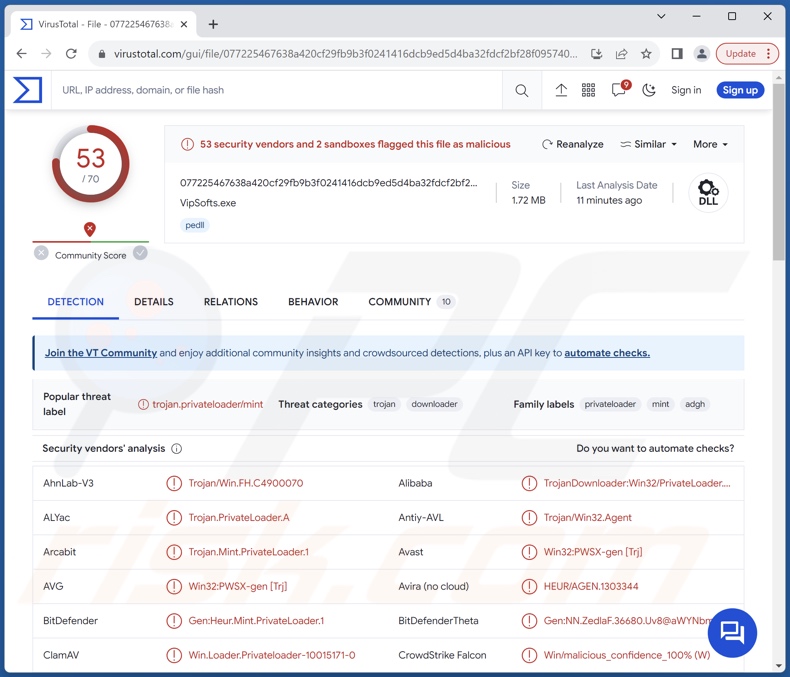
PrivateLoader malware overview
PrivateLoader is a modular loader-type malware. It comprises three primary modules. One is responsible for the implementation of the second – the Core module, which establishes communication with the C&C (Command and Control) server. The third is the Service module that is used to ensure persistence. The Core module downloads the malicious payload that, as previously mentioned, can be incredibly varied.
PrivateLoader is a piece of sophisticated malware – it boasts several layers of obfuscation and uses multiple anti-detection and anti-analysis techniques. For example, this loader can disable the Microsoft Defender Antivirus's Real-time protection feature. Before injecting the final payload or payloads, PrivateLoader collects relevant device data (which can differ based on the malware's build).
This loader has been used to download and execute various programs, including (but not limited to) RATs (Remote Access Trojans), botnet malware, stealers, cryptocurrency miners, ransomware, and others. However, PrivateLoader is not used exclusively to proliferate high-end malicious software since it has also been observed spreading adware and browser hijackers. Below is a more comprehensive list of PrivateLoader's payloads.
The threats associated with an infection depend on the malware's capabilities and the attackers' goals. As PrivateLoader can introduce just about any type of malware into devices – the dangers these infections pose are exceptionally diverse.
The primary threats associated with high-risk malware include decreased system performance or failure, permanent data loss, severe privacy issues, hardware damage, significant financial losses, and identity theft.
| Name | PrivateLoader virus |
| Threat Type | Trojan, loader, downloader. |
| Detection Names | Avast (Win32:PWSX-gen [Trj]), Combo Cleaner (Gen:Heur.Mint.PrivateLoader.1), ESET-NOD32 (A Variant Of Win32/Agent.ADGH), Kaspersky (Trojan-Downloader.Win32.PrivateLoader.b), Microsoft (Trojan:Win32/Mamson.A!ac), Full List Of Detections (VirusTotal) |
| Payloads | Examples listed below |
| Symptoms | Trojans are designed to stealthily infiltrate the victim's computer and remain silent, and thus no particular symptoms are clearly visible on an infected machine. |
| Distribution methods | Infected email attachments, malicious online advertisements, social engineering, software 'cracks'. |
| Damage | Stolen passwords and banking information, identity theft, the victim's computer added to a botnet. |
| Malware Removal (Windows) |
To eliminate possible malware infections, scan your computer with legitimate antivirus software. Our security researchers recommend using Combo Cleaner. Download Combo CleanerTo use full-featured product, you have to purchase a license for Combo Cleaner. 7 days free trial available. Combo Cleaner is owned and operated by RCS LT, the parent company of PCRisk.com. |
Loader-type malware examples
BottomLoader, BunnyLoader, DBatLoader, and HijackLoader are merely a couple of our most recent articles on loaders. As these programs are designed to download/install additional malware, these infections have high variation.
Generally, malicious software can have a very broad or narrow application. However, regardless of how versatile or specific a malware's operation is – the presence of this software on a device endangers its integrity and user safety. Therefore, it is paramount to eliminate all threats immediately upon detection.
How did PrivateLoader infiltrate my computer?
There is evidence of the ruzki group (aka les0k, zhigalsz) offering PrivateLoader as a PPI (Pay-Per-Install) service. In this model, "customers" contact the malware distributors and pay for the desired number of installations.
PPI services are often flexible, and this is the case with what is known of PrivateLoader; hence, the buyers can customize the attacks by region, proliferation/infection chains, used anti-detection measures, etc. Ruzki's PPI service has dealt in installation ranges of tens and hundreds of thousands worldwide, with exceptionally high rates of victims in Europe and the USA.
PrivateLoad has been endorsed by these threat actors on Russian-language hacker forums and Telegram channels. However, as the PPI service is customizable, the way this loader is distributed can differ.
One known method used in PrivateLoader's distribution is through dubious downloads offered on deceptive webpages. Most visitors to such pages access them via redirects generated by misspelled URLs, sites using rogue advertising networks, spam browser notifications, intrusive ads, or installed adware.
Cyber criminals typically use phishing and social engineering tactics to proliferate malware. Malicious programs can be disguised as or bundled with ordinary software/media files. They come in various formats, e.g., archives (ZIP, RAR, etc.), executables (.exe, .run, etc.), documents (PDF, Microsoft Office, Microsoft OneNote, etc.), JavaScript, and so forth.
The most widely used distribution techniques include: drive-by (stealthy/deceptive) downloads, malicious links/attachments in spam (e.g., emails, PMs/DMs, social media posts, etc.), untrustworthy download sources (e.g., freeware and third-party websites, Peer-to-Peer sharing networks, etc.), pirated programs/media, online scams, malvertising, illegal software activation tools ("cracks"), and fake updates.
What is more, some malicious programs can self-spread via local networks and removable storage devices (e.g., USB flash drives, external hard drives, etc.).
How to avoid installation of malware?
We highly recommend downloading only from official and verified channels. Additionally, all programs must be activated and updated by using legitimate functions/tools, as those obtained from third-parties can contain malware.
It is essential to treat incoming emails and other messages with caution. Attachments or links present in suspicious mail must not be opened, as they can be infectious. We advise being careful while browsing since fake and malicious online content usually appears genuine and innocuous.
We must stress the importance of having a reputable anti-virus installed and kept updated. This software must be used to run regular system scans and to remove threats and issues. If you believe that your computer is already infected, we recommend running a scan with Combo Cleaner Antivirus for Windows to automatically eliminate infiltrated malware.
List of known PrivateLoader's playloads;
Remote access trojans:
Loaders:
Botnet malware:
Information-stealing malware:
Cryptocurrency miners:
Ransomware:
- Djvu ransomware family
Adware:
Browser hijackers:
Screenshots of deceptive websites promoting the PrivateLoader malware:
Example of a malicious website (rgames31[.]com) spreading PrivateLoader by presenting it as Grand Theft Auto IV free download:
![Malicious website (rgames31[.]com) spreading PrivateLoader by presenting it as Grand Theft Auto IV](/images/stories/screenshots202409/privateloader-malware-update-2024-09-18-promoter.jpg)
Instant automatic malware removal:
Manual threat removal might be a lengthy and complicated process that requires advanced IT skills. Combo Cleaner is a professional automatic malware removal tool that is recommended to get rid of malware. Download it by clicking the button below:
DOWNLOAD Combo CleanerBy downloading any software listed on this website you agree to our Privacy Policy and Terms of Use. To use full-featured product, you have to purchase a license for Combo Cleaner. 7 days free trial available. Combo Cleaner is owned and operated by RCS LT, the parent company of PCRisk.com.
Quick menu:
- What is PrivateLoader?
- STEP 1. Manual removal of PrivateLoader malware.
- STEP 2. Check if your computer is clean.
How to remove malware manually?
Manual malware removal is a complicated task - usually it is best to allow antivirus or anti-malware programs to do this automatically. To remove this malware we recommend using Combo Cleaner Antivirus for Windows.
If you wish to remove malware manually, the first step is to identify the name of the malware that you are trying to remove. Here is an example of a suspicious program running on a user's computer:

If you checked the list of programs running on your computer, for example, using task manager, and identified a program that looks suspicious, you should continue with these steps:
 Download a program called Autoruns. This program shows auto-start applications, Registry, and file system locations:
Download a program called Autoruns. This program shows auto-start applications, Registry, and file system locations:

 Restart your computer into Safe Mode:
Restart your computer into Safe Mode:
Windows XP and Windows 7 users: Start your computer in Safe Mode. Click Start, click Shut Down, click Restart, click OK. During your computer start process, press the F8 key on your keyboard multiple times until you see the Windows Advanced Option menu, and then select Safe Mode with Networking from the list.

Video showing how to start Windows 7 in "Safe Mode with Networking":
Windows 8 users: Start Windows 8 is Safe Mode with Networking - Go to Windows 8 Start Screen, type Advanced, in the search results select Settings. Click Advanced startup options, in the opened "General PC Settings" window, select Advanced startup.
Click the "Restart now" button. Your computer will now restart into the "Advanced Startup options menu". Click the "Troubleshoot" button, and then click the "Advanced options" button. In the advanced option screen, click "Startup settings".
Click the "Restart" button. Your PC will restart into the Startup Settings screen. Press F5 to boot in Safe Mode with Networking.

Video showing how to start Windows 8 in "Safe Mode with Networking":
Windows 10 users: Click the Windows logo and select the Power icon. In the opened menu click "Restart" while holding "Shift" button on your keyboard. In the "choose an option" window click on the "Troubleshoot", next select "Advanced options".
In the advanced options menu select "Startup Settings" and click on the "Restart" button. In the following window you should click the "F5" button on your keyboard. This will restart your operating system in safe mode with networking.

Video showing how to start Windows 10 in "Safe Mode with Networking":
 Extract the downloaded archive and run the Autoruns.exe file.
Extract the downloaded archive and run the Autoruns.exe file.

 In the Autoruns application, click "Options" at the top and uncheck "Hide Empty Locations" and "Hide Windows Entries" options. After this procedure, click the "Refresh" icon.
In the Autoruns application, click "Options" at the top and uncheck "Hide Empty Locations" and "Hide Windows Entries" options. After this procedure, click the "Refresh" icon.

 Check the list provided by the Autoruns application and locate the malware file that you want to eliminate.
Check the list provided by the Autoruns application and locate the malware file that you want to eliminate.
You should write down its full path and name. Note that some malware hides process names under legitimate Windows process names. At this stage, it is very important to avoid removing system files. After you locate the suspicious program you wish to remove, right click your mouse over its name and choose "Delete".

After removing the malware through the Autoruns application (this ensures that the malware will not run automatically on the next system startup), you should search for the malware name on your computer. Be sure to enable hidden files and folders before proceeding. If you find the filename of the malware, be sure to remove it.

Reboot your computer in normal mode. Following these steps should remove any malware from your computer. Note that manual threat removal requires advanced computer skills. If you do not have these skills, leave malware removal to antivirus and anti-malware programs.
These steps might not work with advanced malware infections. As always it is best to prevent infection than try to remove malware later. To keep your computer safe, install the latest operating system updates and use antivirus software. To be sure your computer is free of malware infections, we recommend scanning it with Combo Cleaner Antivirus for Windows.
Frequently Asked Questions (FAQ)
My computer is infected with PrivateLoader malware, should I format my storage device to get rid of it?
Malware removal rarely requires formatting.
What are the biggest issues that PrivateLoader malware can cause?
The dangers associated with an infection depend on the malicious program's functionalities and the cyber criminals' modus operandi. PrivateLoader is designed to download/install additional malware, and it has been used to spread various programs (extensive list above). In general, the presence of high-risk malware on devices can result in multiple system infections, decreased system performance or failure, data loss, serious privacy issues, financial losses, and identity theft.
What is the purpose of PrivateLoader malware?
Most malware infections are motivated by financial gain. However, malicious software can also be used to amuse the attackers, carry out personal vendettas, disrupt processes (e.g., websites, services, companies, organizations, etc.), engage in hacktivism, and launch attacks based on political/geopolitical reasons.
How did PrivateLoader malware infiltrate my computer?
Malware is primarily distributed via drive-by downloads, spam (e.g., emails, DMs/PMs, SMSes, social media posts, etc.), online scams, malvertising, dubious download channels (e.g., unofficial and free file-hosting sites, P2P sharing networks, etc.), pirated content, illegal software activation ("cracking") tools, and fake updates. Furthermore, some malicious programs scan self-proliferate through local networks and removable storage devices.
Will Combo Cleaner protect me from malware?
Yes, Combo Cleaner can detect and eliminate most of the known malware infections. Note that since sophisticated malicious programs typically hide deep within systems – running a complete system scan is crucial.
Share:

Tomas Meskauskas
Expert security researcher, professional malware analyst
I am passionate about computer security and technology. I have an experience of over 10 years working in various companies related to computer technical issue solving and Internet security. I have been working as an author and editor for pcrisk.com since 2010. Follow me on Twitter and LinkedIn to stay informed about the latest online security threats.
PCrisk security portal is brought by a company RCS LT.
Joined forces of security researchers help educate computer users about the latest online security threats. More information about the company RCS LT.
Our malware removal guides are free. However, if you want to support us you can send us a donation.
DonatePCrisk security portal is brought by a company RCS LT.
Joined forces of security researchers help educate computer users about the latest online security threats. More information about the company RCS LT.
Our malware removal guides are free. However, if you want to support us you can send us a donation.
Donate
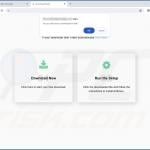
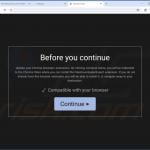
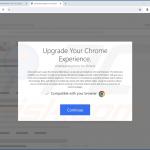
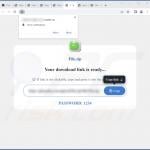
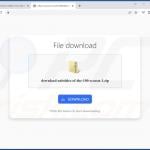
▼ Show Discussion